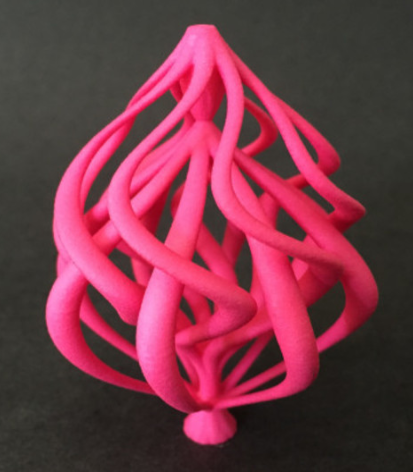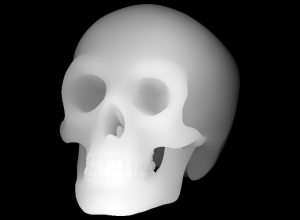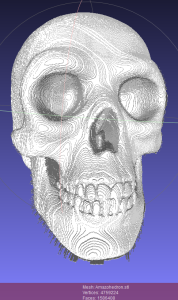Once upon a time the Journal of Graphics Tools had code associated with many of its articles. This was in fact one of the selling points for the journal, which grew out of the Graphics Gems series of books. When Taylor & Francis acquired A.K. Peters back in 2010, they moved the journal to their vast collection of other journals (2671 and counting). The code repository didn’t fit their web template, so they no longer hosted the code. At the time I wasn’t so concerned, as the Wayback Machine mirrored the abstracts and code collection of the old A.K. Peters site. Something happened this year and those backup pages are now gone, e.g., this link used to work.
So, time to rebuild. I’ve maintained the Graphics Gems repository for a few decades; how hard could it be to rebuild a recently-lost code archive? Well, we’ll see. I’ve written Taylor & Francis in hopes that someone knows where they put that DVD or whatever with the code archive. Fingers crossed. In the meantime I’ve been looking around and asking around. Here’s what I’ve collected so far:
“Journal of Graphics Tools” Code Repository
Enjoy what bits are there, and please send me any code you’ve saved that is related to a JGT article. You don’t have to be an author, just a pack-rat. I know that at least one author I asked could not find a backup of his article’s code. I personally can relate: back in 1985 I finished my master’s thesis. A few months later I realized I should get copies of images from my thesis work (in the Utah RLE format – ahhh, memories; astoundingly, that site is still around, things put on cs.utah.edu appear to stay there forever). One backup tape was glitched, so I lost about half my images.
Time for an analogy with the Library of Alexandria (pointed out to me by Jason Mitchell). Go read that article, it’s short, and makes an excellent point. Shorter still is a tweet by the same person which shows the practical effect of our general lack of redundancy. Gamasutra/Game Developer code repository? Gone (AFAIK). The lovely ompf.org forum about real-time ray tracing? Gone. Various game and film company article collections, various useful blogs, various cool resources? Gone baby gone. I encounter this loss every time I update our portal page or the ACM TOG resources page. Of course the “portal” term itself is at least a decade out of style (remember Yahoo?), but knowing where to find the good stuff is still valuable. When some bit of the good stuff goes away, how sad. Sure, there’s Sturgeon’s Law, but the 10% also sometimes disappears.
I’ve had this vague feeling for decades, ever since I started to collect bits and pieces for the Ray Tracing News in 1987, that I’m playing the role of a medieval monk attempting to keep some small bits and pieces of knowledge from disappearing. In fact, the Ray Tracing News archive briefly disappeared when ACM TOG reorganized their site; I moved it to realtimerendering.com. My takeaway for internet resources is “trust no one”, not even myself, since I probably don’t have an infinite life span. The Bret Victor article I mentioned last paragraph (is the article still available? I guess it depends when you read this posting…) points out the problem, but I know of no good solution right now. The Internet Archive’s Wayback Machine is related to Bibliotheca Alexandrina, which is something like naming your new ship the Titanica. The irony, she drips, that this archive somehow lost the Journal of Graphic Tools’ code (update: my guess is someone recently popped in a robots.txt on the dead site). I’m of course now kicking myself for not making a copy of JGT’s code base myself back when I had the chance.
Maybe a better takeaway is “trust everyone.” My one positive suggestion is “make it a zip.” If you have a resource, make the whole site downloadable as one big zip so that it’s easy for you and others to back up. Github offers this automatically. If zipping had been done with JGT’s site, I’d probably have a copy. I have a sort of future sadness for the day Paul Bourke’s or Steve Hollasch’s sites disappear. There are utilities such as HTTrack where one could grab a whole web site, but who wants to mess with that? Well, I now do, but for Hollasch it won’t matter all that much, since he links to lots of external pages (by the way, Xenu is a wonderful free dead link checker). Steve Hollasch’s site, 76 files, sum up to 798 kb – so much more valuable than just about any iPhone photo, which is more than twice as large. Bourke’s site, which includes many PDFs and zips and whatnot, is quite large – it’s still downloading – it might be the size of a season of Rick and Morty (which BTW is a great show). But, once done downloading, I’ll have it, so “don’t you die on me, man” is then a non-issue, at least for me. At a price of less than a nickel per gigabyte, who cares about the cost of storage for code and text?
Sure, a lot of information dies off that absolutely no one will ever care about. But some of the seemingly-useless bits kept around are wonderful to have. Me, I just found the shower that came with our condo-ized piece of the old Victorian we live in – very helpful! It’s said that 90% of the files in any file cabinet are never accessed again. But which 10% are the useful ones? So we naturally keep all the files around. Digital storage is much more compact and painless, yet still easily gets wiped out due to a disk head failure, power surge, or the owner passes away. By the way, if you use Google Docs or Gmail or etc., go set up your Inactive Account Manager right now. On that morbid but practical note, please do remember to send me any code bits you might have from the Journal of Graphics Tools. And do us all a favor and download a zip of the JGT code repository every now and then, just in case Github goes away (I’m thinking of Google Code here, but even BitBucket gets DDOS’ed).
Not so fun fact: 27.5% of the external links on our references page are dead, after 7 years. They’re mostly papers, so perhaps the links have just changed or, at worst, the article can be dug up somewhere (though that’s only true half the time – a lot of game-related articles are not in journals).








